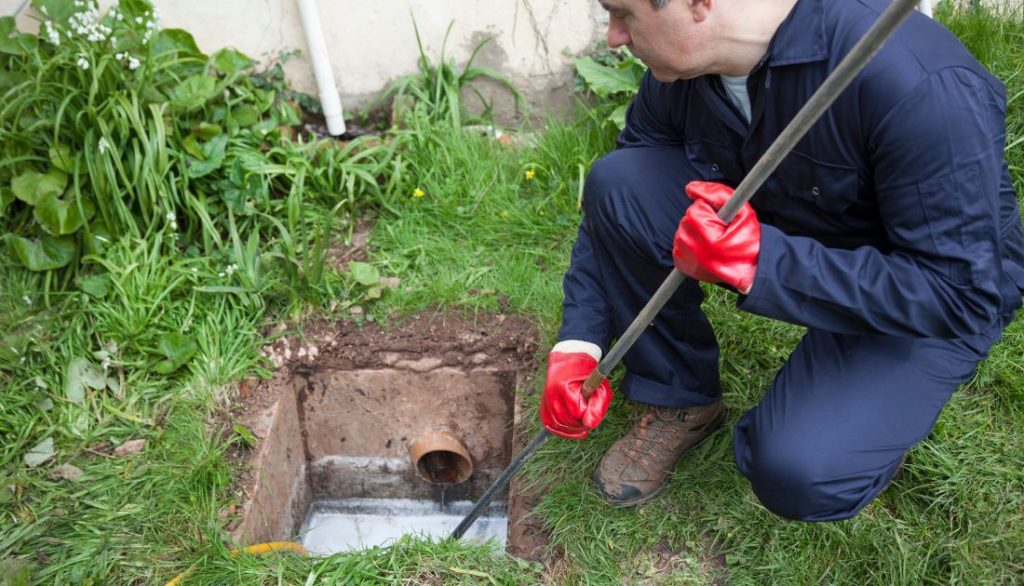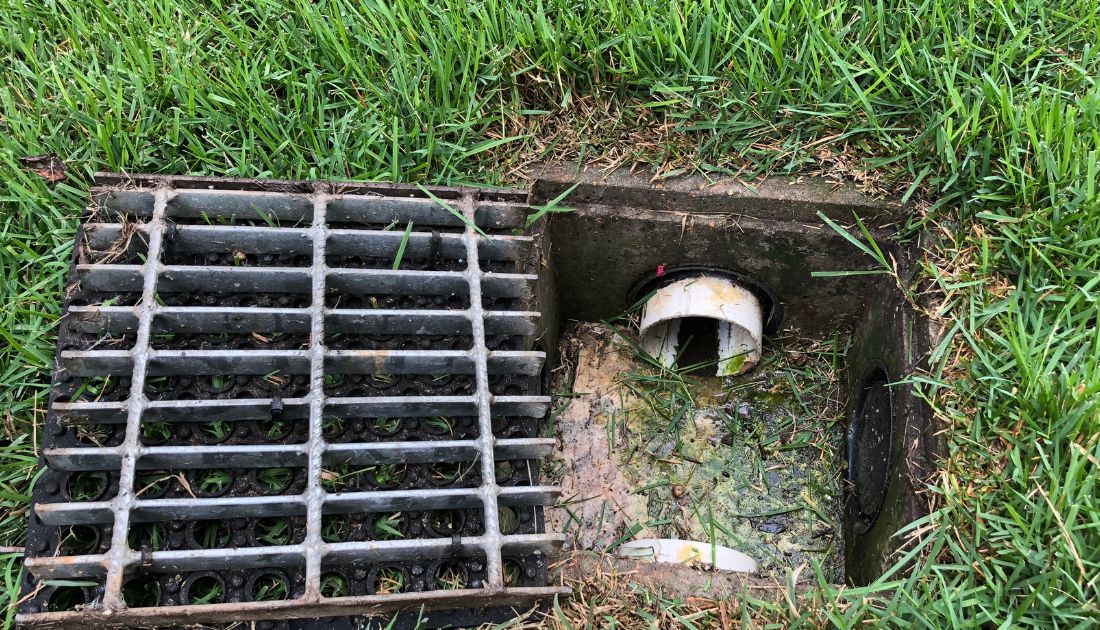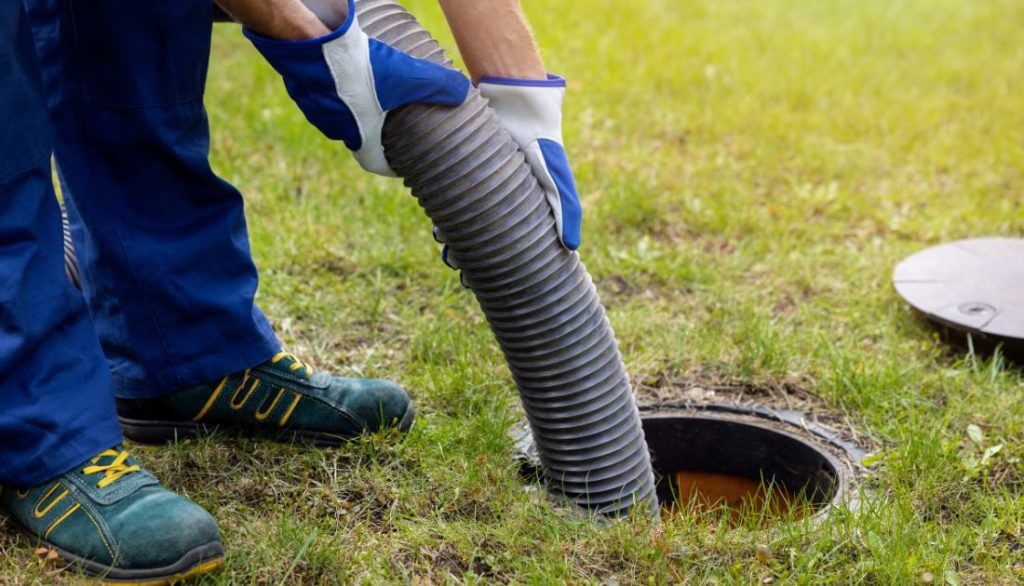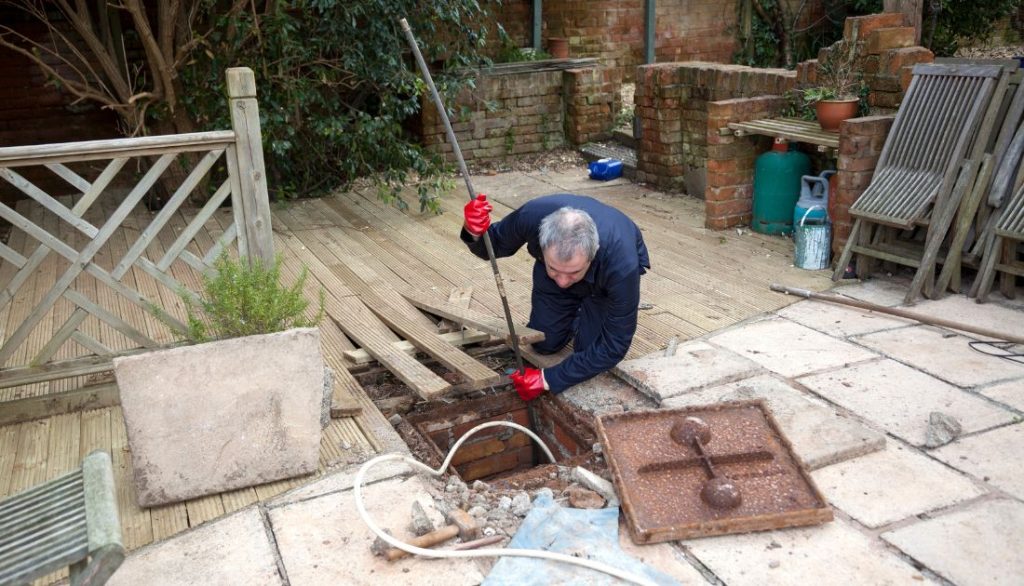Table of Contents
French drains are drainage systems designed to redirect water away from areas where it might cause problems, such as building foundations, basements, or soggy yards. They consist of a trench filled with gravel and a perforated pipe that collects and channels water.
The trench is typically sloped to ensure that water flows away from the problem area and towards a designated discharge point, such as a storm drain, dry well, or a lower-lying area in the landscape. French drains are effective solutions for managing both surface water and groundwater, preventing erosion, flooding, and water damage.
French drains are crucial to any residential or commercial property’s drainage system. These underground trenches filled with gravel redirect water away from buildings, preventing water damage and flooding.
The History of French Drains
Origins: French drains have been around for centuries, dating back to the early 19th century when they were first used in France. They were initially created to manage excess water and prevent flooding on agricultural land.
Evolution: Over time, the concept of French drains evolved beyond just agriculture and began being used in residential and commercial settings. They became a popular solution for controlling surface water runoff and preventing basement flooding.
Modern-Day Use: Today, French drains are an essential part of many drainage systems, helping to redirect water away from buildings and landscapes. They continue to play a crucial role in managing water flow effectively while reducing the risk of water damage.
How French Drains Work
- Water Diversion: French drains divert excess water from your property. They are typically installed underground and consist of a perforated pipe surrounded by gravel or rock. Water seeps into the pipe, directing it towards a designated drainage area.
- Gravity-Fed System: The key principle behind French drains is gravity. Water flows through the soil naturally, moving towards lower elevation areas. By placing the drain on a slope, water can easily flow into it and be carried away from where it could cause damage.
- Preventing Water Build-Up: French drains help prevent water build-up around your home’s foundation or in problematic areas of your yard. By efficiently managing excess water, they minimize the risk of flooding and water-related issues that can compromise the structural integrity of your property.
Signs You Need a French Drain
Standing Water: If you notice water pooling in your yard or basement after heavy rain, it’s a clear sign that you may need a French drain to redirect the water away from your property.
Soggy Soil: Areas of your yard that remain consistently wet and muddy, even when it hasn’t rained recently, could indicate poor drainage that can be addressed with a French drain.
Foundation Issues: Water seeping through the soil and accumulating around your home can cause cracks in your foundation or walls. Installing a French drain can help prevent further damage.
Choosing the Right Location for a French Drain
Slope: Look for areas with a slight downward slope to ensure proper drainage away from your property. Avoid placing the drain in low spots where water can pool.
Distance from Foundation: Install the French drain 5-10 feet away from your home’s foundation to prevent water seepage into the basement or crawl space.
Vegetation and Obstructions: Avoid installing the drain near large trees or shrubs whose roots could block water flow. Clear any debris or obstructions that may impede drainage.
Steps to Installing a French Drain
Plan the Layout: Determine where you want to install the French drain and mark out the area. Ensure it slopes away from your house or other structures for proper drainage.
Dig the Trench: Using a shovel, dig a trench along the marked area approximately 18-24 inches deep and 6-12 inches wide. Ensure that the trench has a consistent slope throughout its length.
Lay Down Fabric and Gravel: Place landscaping fabric at the bottom of the trench to prevent soil from clogging up the drain pipe. Then add a layer of gravel to promote water flow into the pipe while preventing debris buildup.
Install Perforated Pipe: Place a perforated French drain pipe on top of the gravel, ensuring that any holes are facing downward. Connect multiple sections if needed, then cover with more gravel before backfilling with soil.
Test Your Drainage System: Once everything is in place, pour water into your new French drain system and watch how it flows without disruptions or overflows. Adjust as necessary to achieve optimal drainage effectiveness.
Exterior French Drain Installation
To install an exterior French drain, start digging a trench around the property sloping away from the house for proper drainage.
Place a layer of gravel at the trench bottom, then add a perforated pipe to collect and redirect water.
Cover the pipe with more gravel and landscaping fabric to prevent clogging.
Finally, fill the trench with soil and restore the landscaping. This setup effectively channels water from the foundation, preventing erosion and water damage.
Interior French Drain Installation
For an interior French drain, begin by removing a section of the basement floor around the perimeter.
Dig a trench and lay a perforated pipe, connecting it to a sump pump system.
Fill the trench with gravel and patch the floor with concrete.
The sump pump discharges collected water outside, preventing basement flooding.
This method is particularly useful in areas with high groundwater, keeping the basement dry and protected.
Maintenance Tips for French Drains
Regular Inspections: Check your French drain system periodically to ensure it functions properly. Look for any signs of clogging or damage.
Clear Debris: Remove any debris, such as leaves and sediment, that may have accumulated in the drain pipes to prevent blockages.
Flush Out Soil: Over time, soil can build up in the drain pipes, reducing their effectiveness. Periodically flush out the system with water to clear away excess soil.
Proper maintenance of your French drain will help extend its lifespan and keep it working efficiently.
Benefits of French Drains
Prevent Water Damage: French drains effectively redirect water away from your home’s foundation, preventing flooding and water damage to your property.
Improves Yard Drainage: French drains help prevent soil erosion and standing water by efficiently managing excess water in your yard, promoting healthier plant growth.
Cost-Effective Solution: Installing a French drain can be a cost-effective way to address drainage issues on your property compared to more extensive landscaping or waterproofing solutions.
Common Mistakes to Avoid when Installing French Drains
Improper Slope: One common mistake to avoid when installing French drains is not ensuring the proper slope for water flow. The drain should gradually slope at least 1% towards the desired outlet to effectively remove water from the area.
Inadequate Protection: Another mistake is failing to protect the drainage pipe with a geotextile fabric. Without this protection, the pipe can become clogged with debris over time, rendering the French drain ineffective.
Poor Gravel Backfill: Using incorrect or insufficient gravel backfill around the drainage pipe can lead to clogs and reduced drainage capacity. It’s essential to use clean, washed gravel and ensure proper compaction during installation for optimal performance of your French drain system.
FAQs
What is the function of a French drain?
A French drain redirects surface and groundwater away from a specific area, such as a building’s foundation, to prevent water damage and erosion. It achieves this by using a trench filled with gravel and a perforated pipe to collect and channel water to a suitable discharge point.
When is it not advisable to install a French drain?
It is not advisable to install a French drain in areas with high clay content soil, as clay can easily clog the drainage system. Additionally, avoid installing one where it might interfere with underground utilities or in locations where proper slope for drainage cannot be achieved.
Where does a French drain discharge water?
A French drain typically discharges water to a safe location away from the property, such as a storm drain, dry well, rain garden, or a natural drainage area. The goal is to move water away from structures to prevent flooding and water damage.
Is installing a French drain worthwhile?
Installing a French drain is worthwhile if you are experiencing issues with water accumulation around your foundation, basement, or yard. It can prevent significant water damage, reduce mold growth, and protect the structural integrity of your property.
What depth and width should a French drain be?
A typical French drain should be about 12 to 24 inches deep and 6 to 12 inches wide. The exact dimensions depend on the specific water management needs and the volume of water you need to divert.
What are steps to construct a French drain
To construct a French drain:
- Dig a trench sloping away from the area to be drained.
- Lay a layer of gravel at the bottom.
- Place a perforated pipe in the trench.
- Cover the pipe with more gravel.
- Add landscaping fabric to prevent soil clogging.
- Fill the trench with soil and restore the landscape.
How does a French drain operate?
A French drain allows water to flow into a trench filled with gravel and a perforated pipe. The water is collected and channeled through the pipe, redirecting it to a safe discharge point away from the protected area.

How does a French drain function?
A French drain captures and channels water from the surface or groundwater into a perforated pipe surrounded by gravel. The system then redirects this water to a designated discharge area, effectively preventing water accumulation around structures.
Does a French drain effectively solve water issues?
Yes, a French drain effectively solves water issues by redirecting water away from vulnerable areas, thereby preventing flooding, water damage, and erosion and maintaining a dry and stable environment.
Is a French drain the same as a soakaway?
No, a French drain is not the same as a soakaway. A French drain redirects water to a discharge point. At the same time, a soakaway is a pit filled with rubble or gravel that allows water to percolate into the ground, providing localized drainage slowly.


